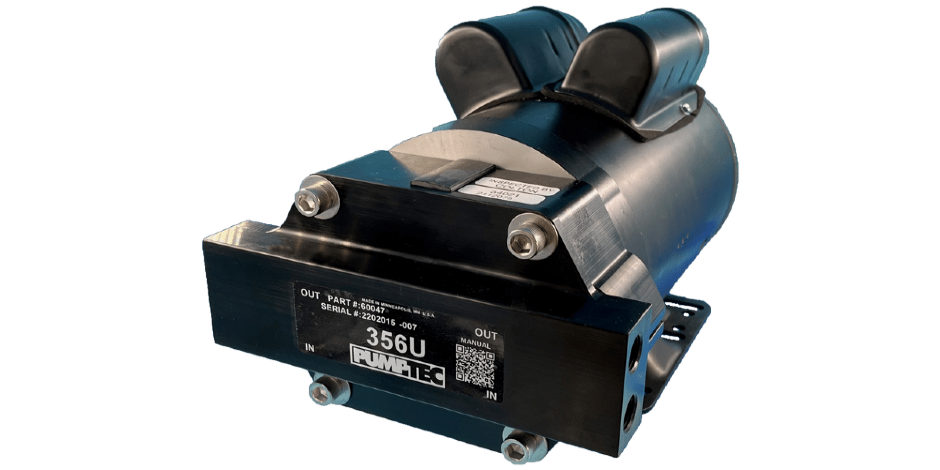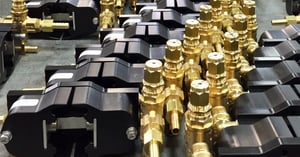Answers to 7 High-Pressure Electric Plunger Pump FAQs

Shawn Glover, VP of Sales, Sep 20, 2022

Manufacturers of pump systems consistently look for ways to optimize their equipment and deliver more value to their customers. A main component — the pump itself — is often scrutinized, especially if it results in poor performance and lots of customer complaints and returns.
As operators move away from gas-powered units and shift toward eco-friendly electric pumps, OEMs are looking for ways to accommodate their needs. But some questions linger about battery-operated pump systems.
To help, we’ve compiled seven frequently asked questions and answers about high-pressure electric plunger pumps. We’ve also included several links to related articles to help you take a deeper dive into each topic, so be sure to check those out, too.
1. What are ideal industries for electric plunger pumps?
Battery-operated electric plunger pumps are ideal for industries that require high pressure (up to 1200 PSI) and low flow (between ¼ – 8 GPM). Because electric pumps are more compact and don’t emit CO2, they are ideal for indoor and outdoor applications.
Examples include:
- Soft wash and power washing
- Lawn care and pesticide application
- Mosquito control systems
- Portable sanitation wash down and fill systems
- Disinfection sprayers
- Commercial cleaning
- Agricultural sprayers
- Evaporative cooling and misting
- Chemical Injection and metering
- And more
2. What are the main advantages of electric plunger pumps?
Electric plunger pumps are much more versatile than gas-powered pump systems because they are run on either a battery or AC power.
Some advantages include:
- High pressure and low flow
- Compact size for easy mobility
- Lighter weight
- Lower noise levels (less than 85 dB)
- Lower maintenance
- More energy efficient (electric plunger pump systems are up to 74% efficient, while gas powered pumps are below 25% efficiency)
- Zero emissions
- Lower total cost of ownership
3. Which applications are not suited for high-pressure mobile electric plunger pumps?
In general, industries that require high flow volumes will require a much larger pump and operating system. The size of pump may also indicate which type of power is recommended. In general…
- Small mobile pumps = electric battery power (DC)
- Large mobile pumps = gasoline power
- Small or large stationary pumps = electrical grid power (AC)
The following are just a few industries that are not recommended for small, high-pressure plunger pumps that use battery power (DC):
- Floodwater removal
- Sewage treatment
- Irrigation systems
- Industries that discharge large volumes of fluids
4. Do battery-powered plunger pumps lack power?
Manufacturers of pump equipment are concerned about recent legislation banning the sale of small gas-powered pump equipment in California and are working to convert affected systems to battery power. The biggest objection for OEMs and operators is a perceived lack of power and that systems will drain batteries too quickly.
Properly designed electric plunger pump systems, however, can deliver consistent and precise flow and pressure for commercial operators without having to switch out batteries multiple times each day. The key is not necessarily in finding the best battery; instead, the key is in finding the best pump with the highest efficiency rating possible. Plunger pumps are inherently efficient and can run on a single charge all day when properly designed and configured.
DEEP DIVE: The Importance of High-Pressure Pump Efficiency
5. How much pressure output can an electric plunger pump give?
While most manufacturers and engineers understand that the key to a pump’s performance is actually more about flow rates than PSI, pump operators still seem to focus on pressure. We’ve written extensively about the relationship between flow and pressure and how higher pressure is the result of resistance to flow, but it bears repeating.
DEEP DIVE: Understand Pump Flow Rate vs. Pressure
A pump’s job is to deliver a rate of flow. A lower flow rate typically results in higher pressure when paired with the proper nozzle. Consider a misting system that puts out less than ¼ GPM at 1,000 PSI. The key to maintaining pressure is having a smooth and consistent pump action and also using durable materials that can hold up to high pressure over time. In general, an electric plunger pump can deliver up to 1,200 PSI, but a lot goes into determining proper GPM and PSI for each application. So, we recommend going deeper by reading our related article and downloading our guide to proper GPM and PSI below:
Get our FREE Guide to Proper GPM and PSI:
6. Is an electric plunger pump the same as a piston pump?
Some operators use the terms piston and plunger pumps interchangeably, but there are distinct differences. A lot has to do with the placement of the seal. A piston pump’s seal is connected to the piston and moves in unison inside the cylinder housing. A plunger pump seal is not attached to the plunger. It has a stationary seal that is attached to the inner cylinder housing of the pump.
The reason this matters is that much less friction and resistance occurs in a plunger pump as a result. Extra friction leads to premature wear and potential pump failure. A plunger pump is simply more durable. Its lower friction also allows for higher pressure ratings. More friction also means lower efficiency. If an application requires high pressure and longevity and efficiency is a concern, a plunger pump is a better option.
DEEP DIVE: Plunger Pump vs. Piston Pump: What’s the Difference?
7. How much do electric plunger pumps cost?
The cost of high-pressure electric plunger pumps can vary widely depending on the application and customization. Generally, however, the up-front cost of a plunger pump will likely be more than a comparable diaphragm or centrifugal pump, but it’s critically important to look at the big picture and the total cost of ownership.
For example, some industries treat their pumps as practically disposable. They may use a pump for a single season or replace it every year. Not only is it bad for the environment, it’s also bad for their bottom line. While a cheaper pump might “feel” better on the front end, it will cost significantly more over time. Another consideration is fuel consumption for gas-powered engines or maintenance costs for triplex oil-bath pumps which add up. Electric plunger pumps have the capability to offer significant savings in the long run, so it’s important to look at more than just the sticker price.
DEEP DIVE: 4 Factors That Impact High-Pressure Pump Costs
There are likely other questions about electric plunger pumps not covered in this article that you’d like answers to. Our team of pump experts is happy to help, so just reach out. You might also find what you’re looking for when you browse through our extensive library of articles and resources. Be sure to subscribe to our blog to continue receiving these types of insights in your inbox.
Also view our Gas to Electric Pump Conversion Guide below to further determine how to make the switch to electric pumps.


